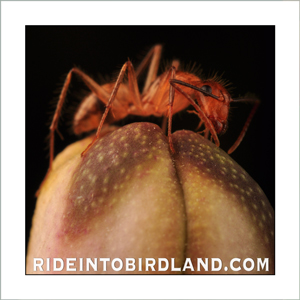 How does it work, this wondrous thing we call Nature?
How does it work, this wondrous thing we call Nature?
It works in infinite ways. So many indeed that, try as we might, we’ll never grasp it all. Put all of humanity’s collective mind to the task and we would still fall short.
Fear not, this is not a tirade against scientific enquiry, nor is it me slipping into mystical rapture. These are just ideas presented to me by a story of love between orchids and ants.
Consider the orchids.
Often blessed with fragrant flowers of breathtaking beauty, orchids belong to one of the two largest families of flowering plants (Orchidacae). Most people don’t realize it but vanilla, widely known as the most common flavor of ice-cream, is actually derived from the vines of Vanilla planifolia, an orchid native to Mesoamerica. Orchids have lured botanists to some of Earth’s most inaccessible locations, yet scientists cannot agree on a definite number of species, having inscribed between 21,950 and 26,049 of them in a taxonomical record considered to be in constant flux. That’s about as many as all species of bony fish and more than twice as all the birds. Adding to the list, horticulturists have taken advantage of the family’s evolutionary traits to produce more than 100,000 additional hybrids over decades of dedicated work.
Orchids make up a world all their own. They’re are also deeply connected to the ecosystems that nurture them, often in very specific and quasi-invisible ways. Most notably, natural pollination of some species of orchids depends on relationships so specialized it’s nothing short of a miracle when it actually happens.
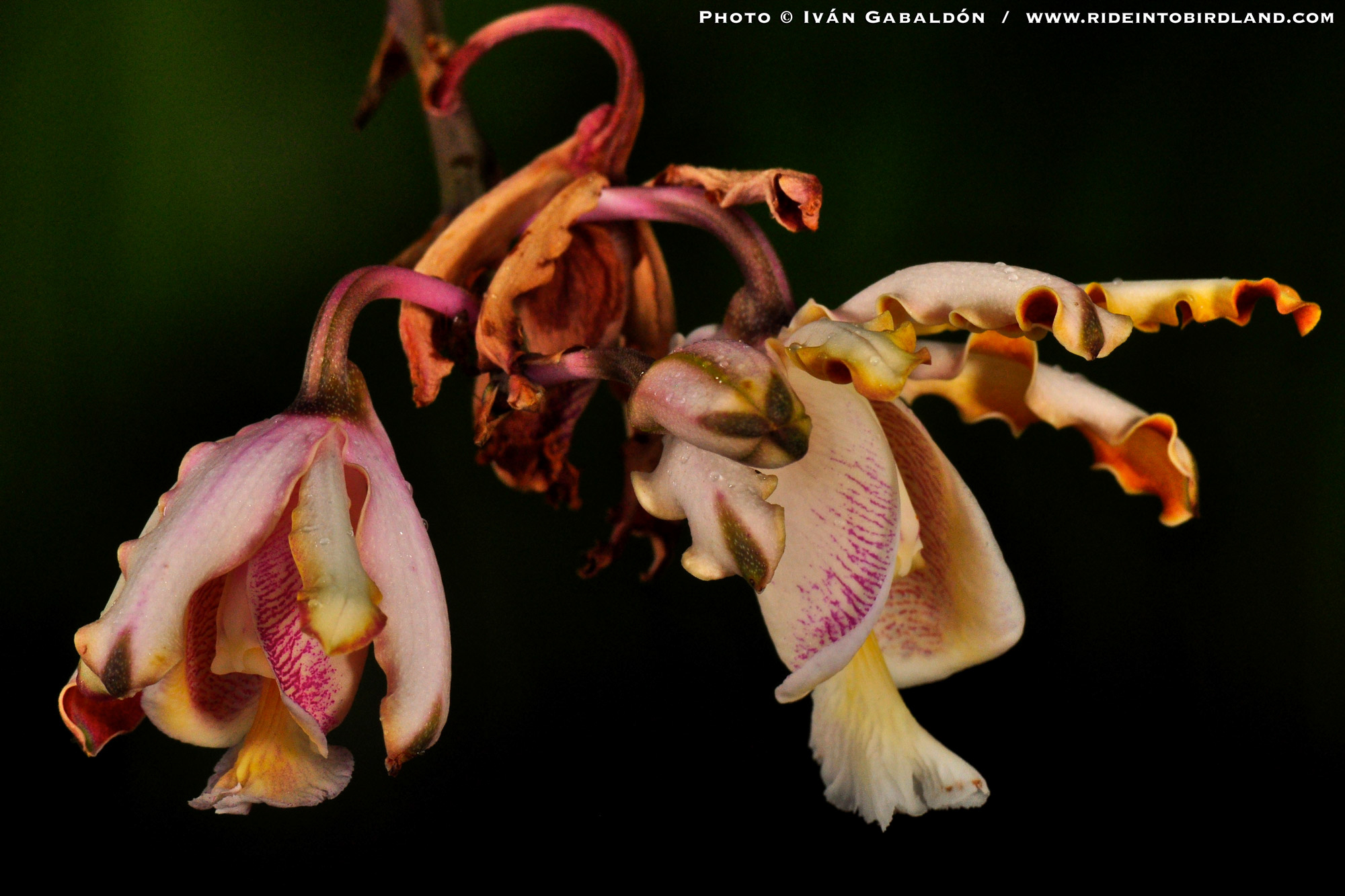
Open flowers of Myrmecophila christinae, orchid species endemic to the Yucatan Peninsula. (Photo © Iván Gabaldón).
And now, consider the ants.
Having roamed the planet for 130 million years, ants thrive in all but the most inhospitable places on Earth, namely Antarctica. Scientists estimate that ants make up between 15 and 25% of all terrestrial animal biomass and have identified more than 12,500 species out of a total of 22,000 believed to exist. Ants have no brains but can solve complex problems. They’re able to transfer acquired knowledge to subsequent generations, an ability that only mammals with large brains, among all animals, are also known to possess. It’s what we humans call “teaching”.
Ants live in complex societies that can grow to be millions strong and where labour is neatly divided among specialized castes. Some species of ants are capable farmers. Others wage warfare, enslaving their defeated opponents and putting them to work. Ants use body chemistry as weaponry but also as a tool for communications. Often regarded as pests by humans, ants actually help control many pests and provide vital ecological services like seed dispersal and aeration of soil.
And that is just the tip of the iceberg. Or shall we say, the beginning of this story.
A spark of orchid-related knowledge and a gardener with a gift
I was still living in Quintana Roo when I set out for Merida one fine day to interview celébre conservationist Joann Andrews. After a long, fruitful conversation, as Joann walked me through her garden towards the main gate of her ample home, she dropped yet another bit of knowledge on me. Joann is widely recognized as an authority on orchids, a title that cannot disguise her youthful enthusiasm for these exuberant plants.
“It’s the most remarkable thing”, she said as she showed me one of her plants. “Scientists did a study and found that some species of orchids here in the peninsula interact with as many as nine species of ants. The ants help the flower bloom, defend the plant from herbivores and take up residence in its bulbs, where they store dead insects that in turn provide protein for the orchid. The reward for the ants is to feed on the orchid’s nectar.”
The image stuck. This was definitely something I wanted to see. Little did I know I’d soon be granted that wish.
Enter Manuel, a gentle man from Chiapas who tended to all plants in the small condo where we then lived, tucked away in a blessed patch of surviving forest a few minutes north of Akumal. One afternoon, on his bicycle ride back home, Manuel came upon a lot being cleared for construction. Everything had been cut down, including many orchids sadly discarded and left to die. Manuel rescued as many as he could and the following day brought some to our garden. Thus I had the pleasure of meeting Myrmecophila christinae.

“Orchids of Quintana Roo – Hidden Beauty”, by León Ibarra González and Joann M. Andrews. (Photo © Iván Gabaldón).
Joann had graciously given me a copy of her book “Orchids of Quintana Roo – Hidden beauty” (in Spanish, co-authored with León Ibarra González), where I soon found what I deemed to be our orchid. Its Maya name, given as hombak or xombak, means “bone with marrow”, in allusion to the resemblance between hollow bones and the plant’s pseudobulbs. Its scientific name, Myrmecophila christinae (inscribed in the taxonomy by Carnevalli & Gómez Juárez), is derived from the Greek words myrmex (ant) and philos (friend). Both Maya and scientific names provide clues to the intriguing life story of an orchid with hollow pseudobulbs and a peculiar affinity with ants.
Armed with a latin name, Google soon directed me to the “Centro de Investigaciones Científicas de Yucatán” (CICY), where the same Dr. Carnevalli who christened the species holds permanent residency as professor and researcher. A text bearing his signature describes Myrmecophila christinae as having “large hollow pseudobulbs with openings near the base, through which several species of ants enter to live inside. The ants establish a symbiotic relationship with the plant, acquiring living space in exchange for protection against herbivores and a supply of nutrients for the orchid, derived from the colony’s waste and detritus.”
A story my camera couldn’t miss
By giving Myrmecophila christinae a new home in a tree so close to my doorstep, Manuel had granted me a privileged opportunity to document this love affair between an orchid and its multitude of antsy friends. I threw out electrical cords, set up two studio strobes with soft-boxes, and went to work with a 60mm Micro-Nikkor lens and a vintage Nikon M-2 extension tube. Over the course of several days I became fixated on an obsessive quest to achieve sharp images of fast-moving ants.
It soon became apparent that two species of ants were active in sharply distinct work-shifts. During daylight hours I photographed tiny (2-3 mm) black ants with prominent and often raised abdomens. Then, as night fell, these were replaced by large (7-10 mm) red ants with long antennae.

The red ants were present in larger numbers, turning parts of the plant into “ant highway”. (Photo © Iván Gabaldón).
In between photo sessions I edited the images and conducted fruitless searches on the internet, hoping to find scientific names for the ants. I may have come close several times, but having reached no certainty I refuse to indulge in “optimistic listing”, so all ants must remain anonymous in this post. (I appeal to any entomologists reading this, share your knowledge with us via the comments section below or using our contact info at the top of this page, I’ll add the information with due credits).
The tiny black ants were, as dictated by their size, hardest to photograph. They were also amusing to watch, their disproportionate abdomens going up and down in some kind of telegraphic dance. A few wasps also visited the orchid and made worthy photographic subjects.

The wasp seemed to like this spot on the yet unopened flower, but as far as I could tell, it was not collecting nectar as were the ants. (Photo © Iván Gabaldón).
Tiny black ants and visiting wasps aside, the bulk of my attention was caught by the persistent activity of the larger, reddish ants. Emerging from the pseudobulbs at the base of the plant, they traveled the length of the two-meter stem towards the yet unopened flowers and went to work. To my untrained eye they seemed to be caressing the plant, over and over, ever so gently, until… voilá, a tiny drop of crystal-clear nectar would pop to the surface of the bud, only to be quickly harvested by the ants, worthy reward for their efforts. Fascinated, I lost track of time.
A friendly archaeologist digs and comes up with treasure
After all those hours of photography and quite a few more spent editing , I knew I had to share my images with Joann. In due time we met again in her famous library, and while looking at the photos I asked her about the paper on the relationship between orchids and ants, the one she’d mentioned to me months earlier. She didn’t have it at hand but I was in luck. Present in Joann’s library that day was a visiting archaeologist, engrossed in meticulous classification of artefacts excavated from the backyard of a 19th century home in Sisal. He kindly offered to go on-line and, having access to academic resources, quickly dug up the dissertation “Schomburkia tibicins Batem. (Orchidacae) – effect of mirmecophily on reproductive fitness”. (Rico-Gray, Victor, Ph. D. – Tulane University, 1987). One download later I was served with a .pdf file to go.
The work by Rico-Gray does not focus on the exact species of orchid I photographed, but one closely related to it. So close indeed that, back on CICY’s website, I found reference to the confusing similarity between our Myrmecophila christinae and Myrmecophila tibicinis, another ant-loving orchid native to the Yucatan Peninsula that was first described as Schomburgkia tibicinis by James Bateman in his 1843 book, “The Orchidaceae of Mexico and Guatemala”. This gorgeously illustrated volume, much to my surprise, can be perused page by page on-line thanks to archive.org.

Myrmecophila tibicinis as featured in “The Orchidaceae of Mexico and Guatemala”, published by James Bateman in 1843. (Screen capture from archive.org).
Scientists, laypeople and mysterious bees
Going back to Rico-Gray, his paper on Myrmecophila tibicinis details the ins and out of a study that required 13 months of field work over the course of four years during the mid 1980s. Activities were carried out in the dunes of San Benito, in northern Yucatan, and included “determination of the dispersion pattern of the orchid, monitoring fruit set and determination of pollination vectors, a study of the effect of ants on the reproductive structures of [the orchid], and radioactive labelling experiments to determine uptake in the pseudobulbs”.
Wow. If the previous paragraph made you dizzy, I sympathise. I lack the scientific background to fully comprehend this type of report, but nevertheless I read it and found it fascinating. Not to go out of my depth here, I’ll just say the study does go into the many aspects of the mutualistic relationship between orchids and ants, including possible co-evolutionary implications. It seems clear, among other things, that the ants act as bodyguards and protect the orchid from herbivore insects. The orchid depends on the ants, which are always present on the plant, yet the ants provide this service out of convenience and opportunity, for they can also survive in association with other plants. The ants obviously indulge in the delight and nutritious value of “extrafloral nectar”.
The ants, however, are not the orchid’s pollinators, and hence this story takes an unexpected detour towards uncharted territory. The paper explains how different species of orchids use unique mixtures of 39 aromatic fragrances to create one-of-a-kind odors, each designed to attract a single, highly specialized species of bee. It is these bees who, in their own flights of fancy, determine each orchid’s chances for successful reproduction.
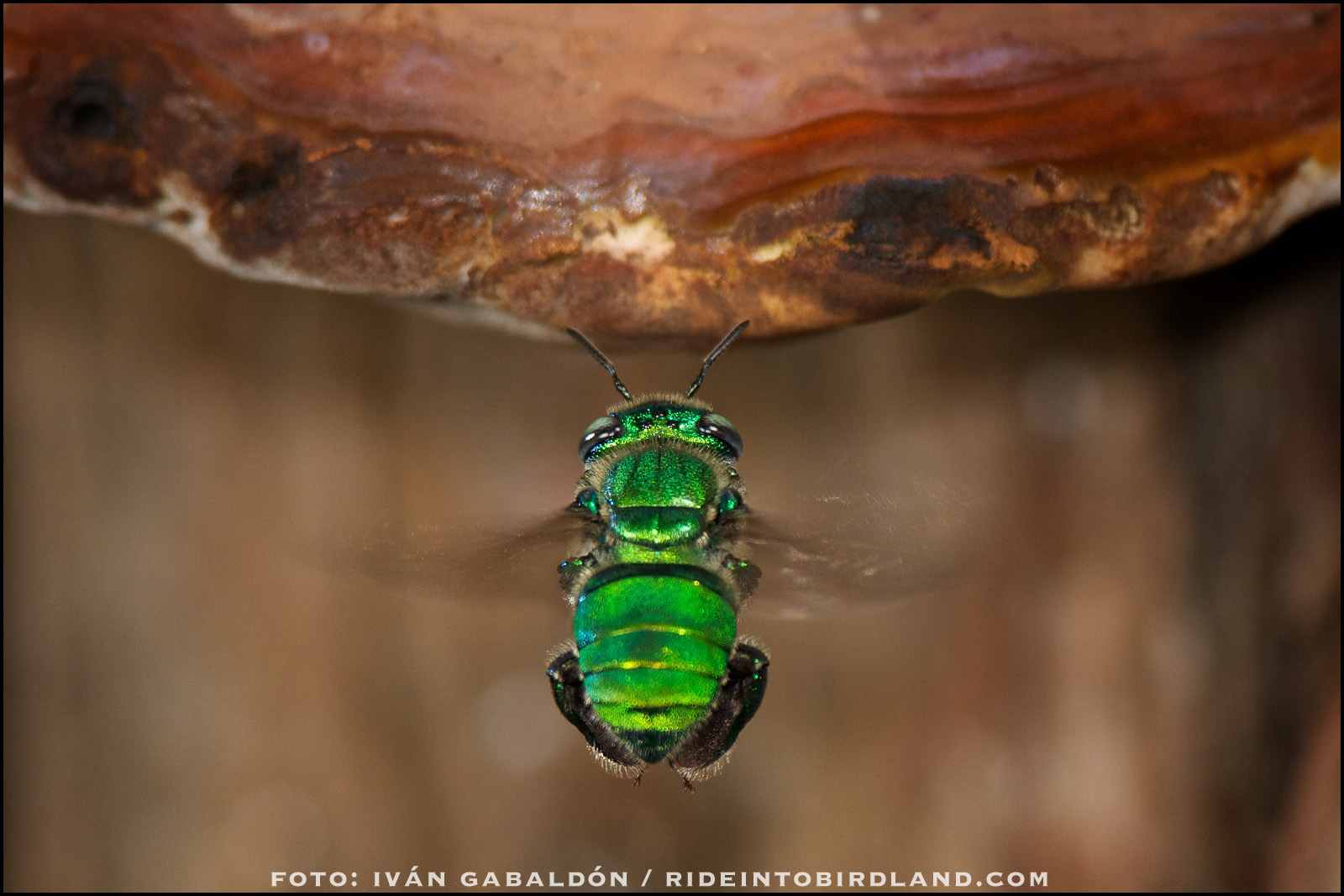
An “orchid bee”, although not the one described by Rico-Gray as the specific pollinator of Myrmecophila tibicinus. Not content with its stunning emerald color, the male of this species reportedly uses fragrances harvested from orchids to attract females. (Photo © Iván Gabaldón).
So now, consider the bees
In order to do so, let’s cherry-pick from Rico-Gray:
“Pollination takes place at dawn, just after sunrise, when floral odor is highly perceptible. Visits are very brief. (…) The bee’s next visit is to another flower of the same individual, and afterwards will fly very fast out of the observer’s sight range. Visits are difficult to observe due to the low light conditions (…) and because they are quite rare. Euglossine bees fly much too rapidly to follow their activities over large areas, (…) very little is known about their home ranges. During the course of field work (three consecutive flowering seasons) several bees were seen flying rapidly over the study area. Ten bees carrying orchid pollen on their backs were observed close to orchids. Five were seen entering the orchids; only one was caught (…) no sex determination could be made for these bees. All the observations (…) were done in the early morning. I concealed myself in the bushes, ca. 5 m away from the orchid plants, surrounded by 5-9 orchid individuals”.
And so it happens that, after all my efforts to photograph the love affair between an orchid and its ants, the image that stays with me is one I’ve yet to see: a scientist getting up before sunrise, for months on end, to hide uncomfortably in the bushes in wait of an elusive bee that prefers not to be seen. The more he learns about his subject, the more he’s aware of that which escapes him.
As a member of the human race, it gives me pause. We have a long history of taking Mother Nature for granted. Only recently are we “evolving” towards feeble, self-serving attempts to assess the “economic value” of natural systems, assessments that can be used to support conservation initiatives or to “rationalize” continued environmental pillaging. How much is a tree really worth? How about all the trees? What if we include all species that interact with those trees, among those our own? Could we keep count?
Our culture is materialistic, our thinking short-term, and for all our brainpower it’s left to an elusive bee to pose the most lucid question: How can we put a price-tag on infinite wonders still unknown?

After much nibbling by the ants on the closed bud, the orchid finally disrobed in all its splendour. (Photo © Iván Gabaldón).
I.G.H.
—————————————————————-
SOURCES:
On ants:
Ant – Wikipedia, the free encyclopedia
On orchids:
Orchidaceae – Wikipedia, the free encyclopedia
“Orquídeas de Quintana Roo” – Belleza Oculta”, by León Ibarra González and Joann M. Andrews.
CICY website (which now seems to be temporarily offline).
On ants and orchids:
“Schomburkia tibicins Batem. (Orchidacae) – effect of mirmecophily on reproductive fitness”. (Rico-Gray, Victor, Ph. D. – Tulane University, 1987).
————————————————————-


 Español
Español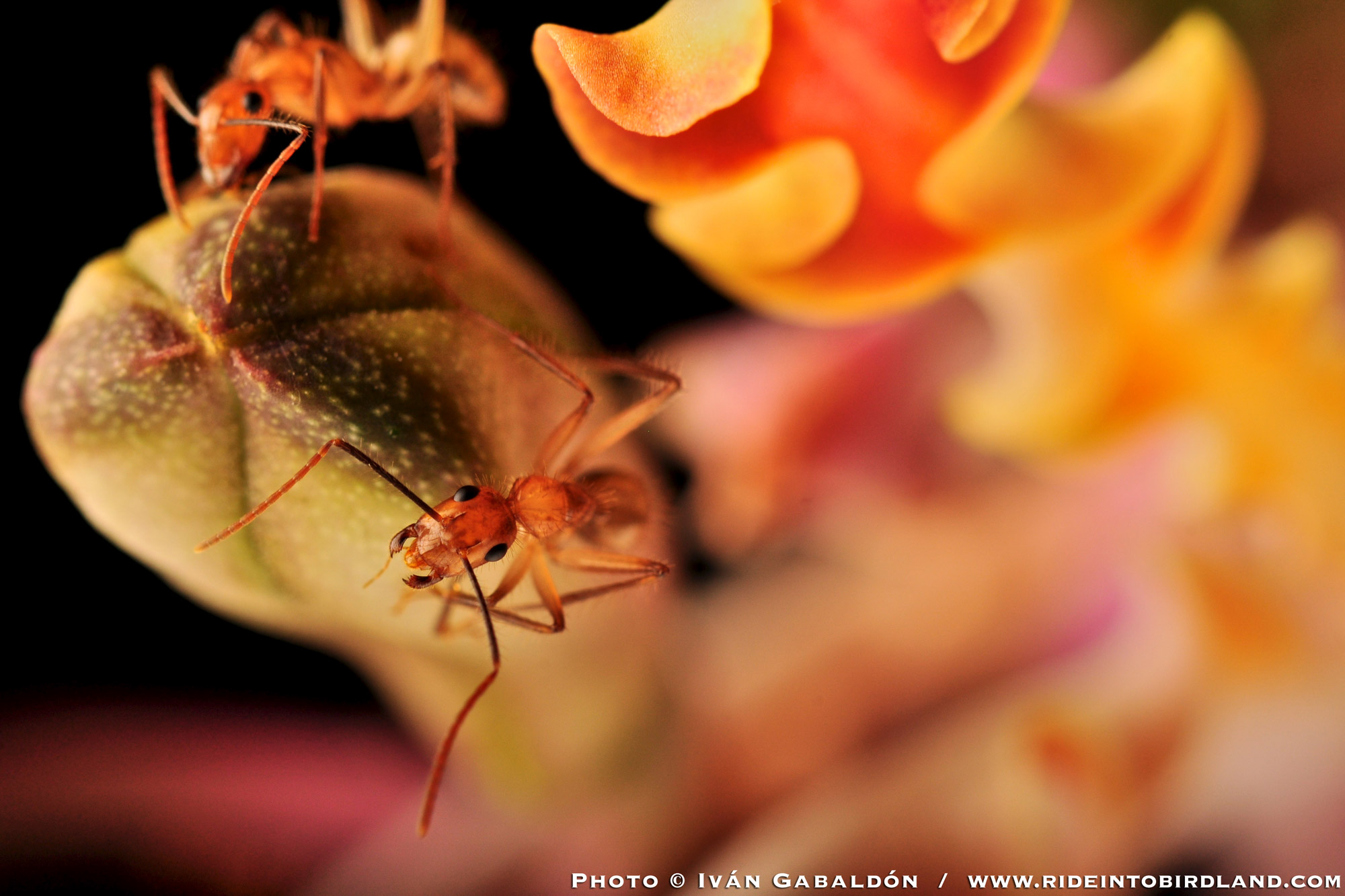
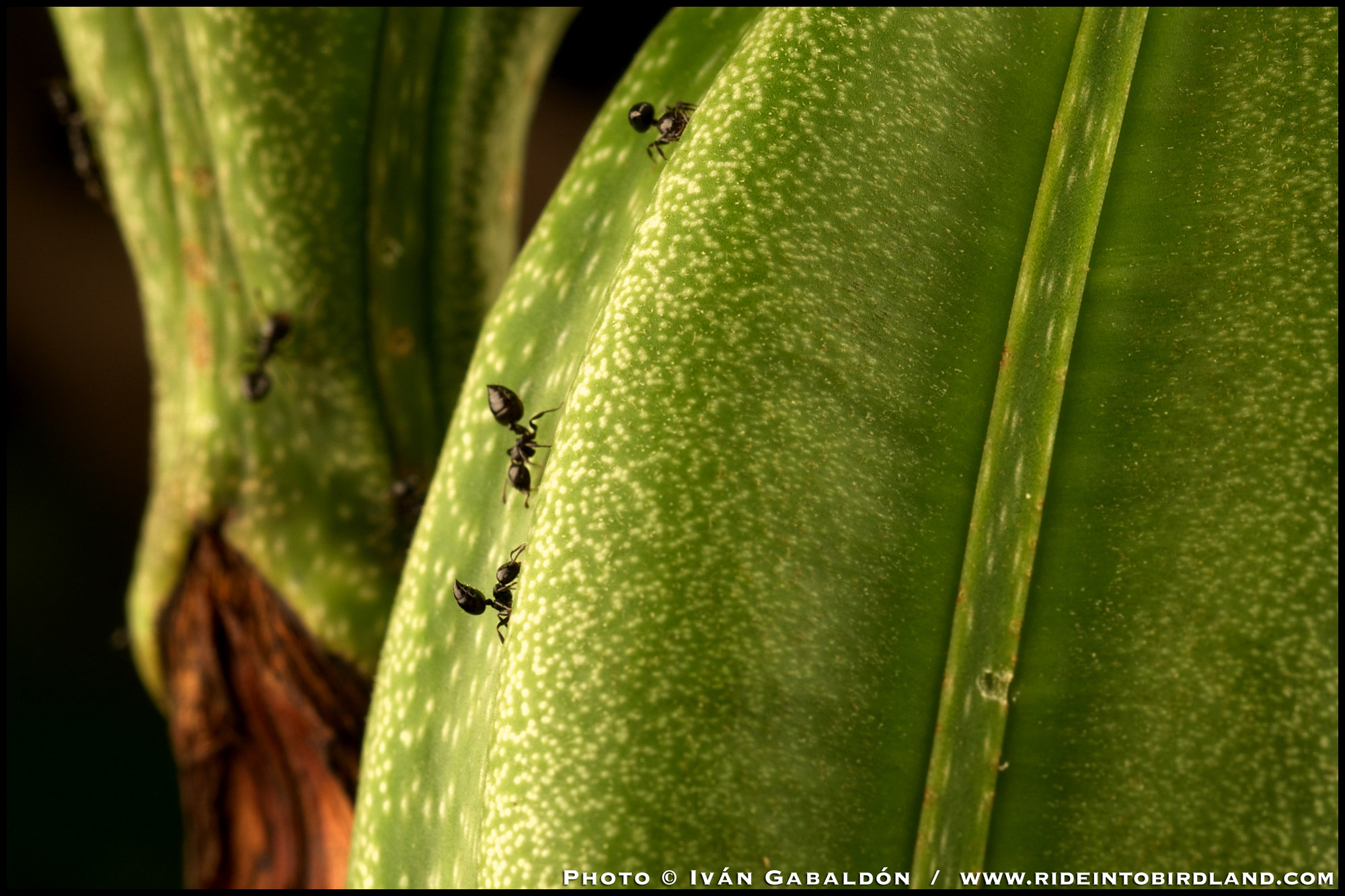


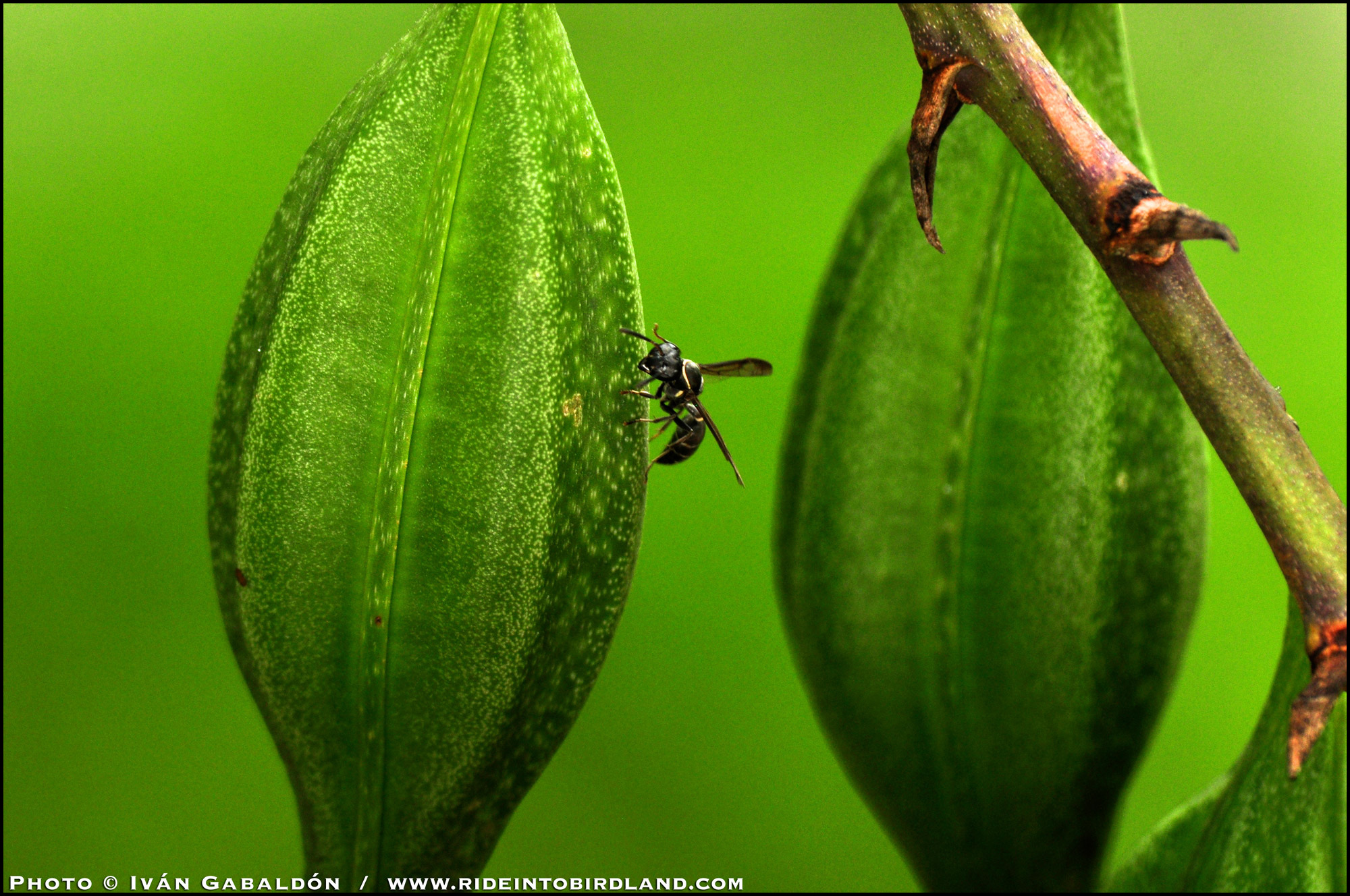




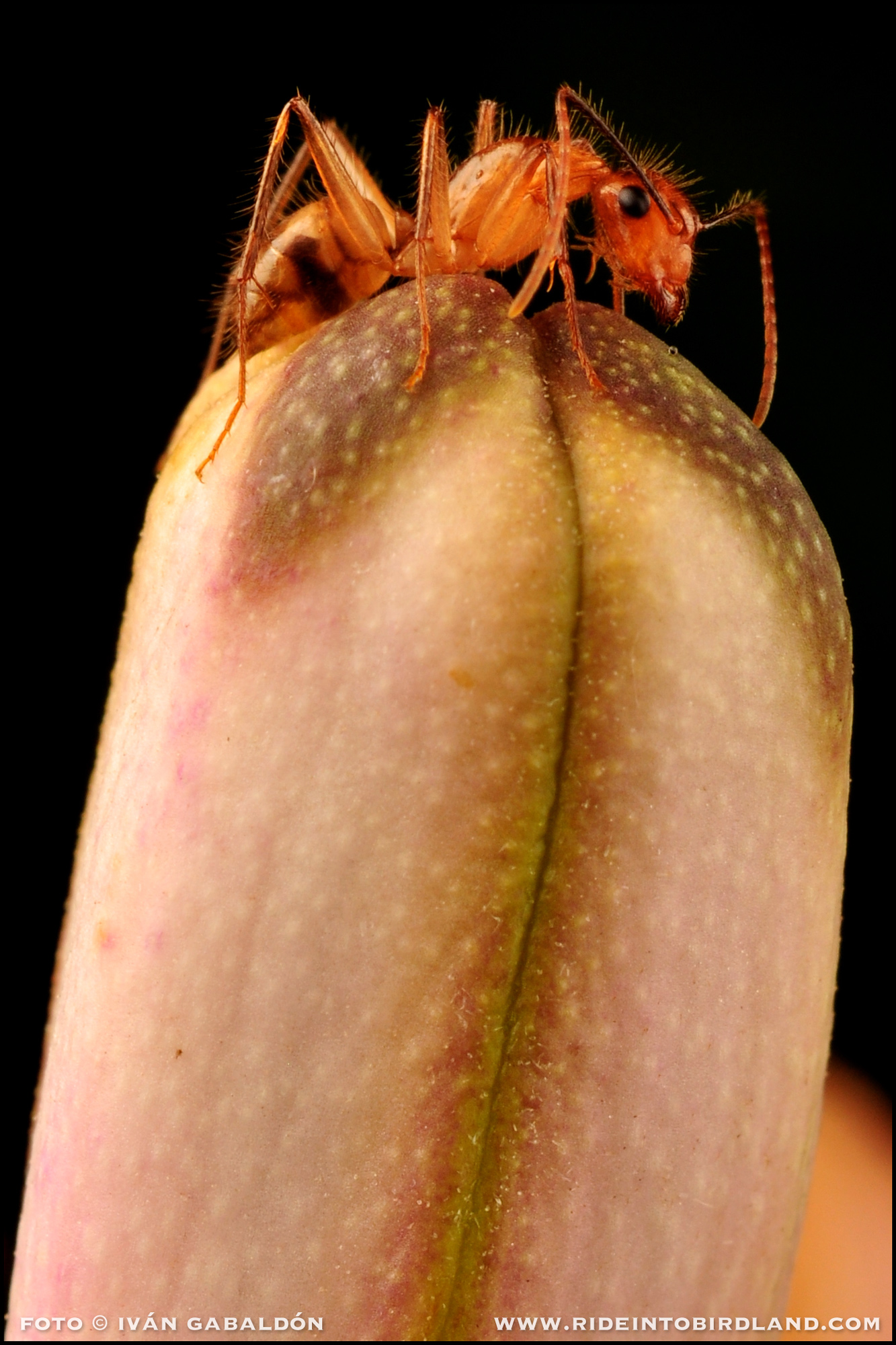


I bought a Myremecatavola Frances Fox five months ago. It’s in bloom and I thought let’s read up about it. The normal hybrid parentage, growth habit,blooming habits etc. Just a normal curiosity. It’s a weirdly big plant. There I found that it’s Pseudobulbs we’re big because of Tibicinis’s ant welcoming traits. And now your page gave a wonderful and engaging description of the ant homing orchids in the Yucatán Peninsula . Many thanks. I’ll be reading this for a week at least. Maybe longer. 🤗
Hello Veena, thanks so much. It’s always a joy to learn that someone out there on the huge wide web has found one of my stories and didn’t just read it, but actually felt a meaningful connection to it. As if orchids weren’t amazing enough, witnessing those instances of symbiotic interactions between orchids and ants opened up a whole new world of appreciation to me, one that I can see you also share. Sincere thanks for taking the time to post your comment, it makes it all worthwhile. Cheers! 🙂
Wow this is so interesting. I’ve been wondering if the 2 types of ants – both black but one maybe 2mm & the other perhaps 7 0r 8mm – I see on my vanilla racines are a pest or a friend. I noted that neither ant appeared to be damaging the buds or open flowers, which I’m currently hand pollinating, But they swarm all over the whole bunch & the big ones have made a nest in a curled up vanilla leaf just above it. Now that I’ve read your observations I’ll just let them be in the hope that they are indeed friends not foes! I have after all been successfully growing good beans for about 8 years. Thank you for your informative post! I’m in tropical Far North Queensland in Australia by the way!
Hello Janet! It gives me much joy to know that my post has provided some reading pleasure and perhaps even useful information to you in Australia. I hope your vanilla thrives and the ants that visit it are friends, not foes, as was the case of the Myrmecophila I encountered. I’m guessing you know vanilla is originally native to mesoamerica, right? Thanks so much for posting your comment!
Excelentes contenidos. Agradecimientos por esta muy buena pagina. Ivan Marquez
PD: ustedes no enviaran a mi correo ningún articulo por mas interesante que sea, yo los busco si me interesa. Un abrazo.
Muchas gracias por visitarnos y gracias por su comentario, me alegra saber que encontró contenido interesante, saludos. 🙂